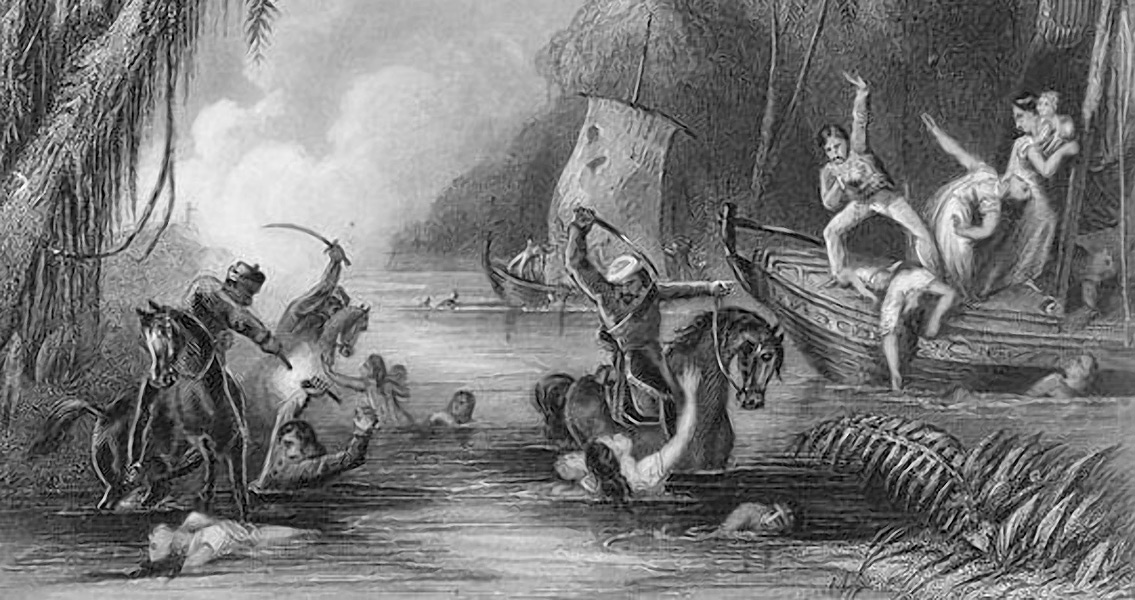<![CDATA[The long brewing discontent with the British occupation of India was brought into shocking clarity on 27th June 1857, in the Siege of Cawnpore. Events at Cawnpore sent shockwaves through Victorian Britain. By the end of the siege almost an entire British garrison, as well as women and children, had been massacred by an Indian uprising. The full extent of the cost of the British Empire was suddenly laid bare, as were the vicious resentments it could inspire in occupied territories. Just as shocking however, were the brutal, indiscriminate retaliations carried out by the British forces in India, a terrifying instance of the excesses of imperialism. By late June 1857, the British garrison at Cawnpore had endured three long, torturous weeks of siege in the blistering Indian sun. The British forces, along with civilian women and children, were desperately short of ammunition, food and medical supplies. Under a constant bombardment of gun fire, the bedraggled forces were facing the very real prospect of starvation. Disease had started to spread through those trapped in the barracks, while the stress of the situation had sent others insane. Attempts to call for help from other nearby garrisons had proved fruitless, their forces occupied with resisting the rebellion in their own territories. Sir Hugh Wheeler, the 67 year old commander of the garrison, and close to a thousand others sheltering in the barracks at Cawnpore were in a desperate situation. On 24th June Wheeler had no choice but to accept an offer from the rebels to allow those in the barracks to leave under safe conduct down the River Ganges to Allahabad. Three days later, on the 27th June, Wheeler led the exhausted, starving, disease ridden people out of the barracks, arrangements having been agreed with Sahib, the leader of the rebels, to allow the British to leave on thatched boats down the Ganges. As they approached the boats on the river however, the British were met with the ominous site of the entire rebel force amassed and heavily armed along the river banks. Before the flimsy boats could leave Cawnpore, they were attacked. The rebel artillery resumed firing, while flaming arrows were fired at the thatched roofs of the boats. Soldiers who survived the initial barrage and swam to the shore were hacked down or bludgeoned to death. Some 210 women and children were captured in the massacre and taken to the Bibighar, a single storey house in the town. Imprisoned there for three weeks in atrocious conditions, their fate was no better than those killed in the Ganges. When news came that a British force was approaching Cawnpore, Sahib panicked, realising it was unlikely he'd be able to trade the prisoners. The women and children were mercilessly hacked to pieces by professional butchers, their dismembered bodies then thrown into a nearby well. The shocking brutality at Cawnpore came amidst a massive uprising in India, variously called the First Indian Revolt, the First War of Independence or the First Nationalist Uprising. Mostly isolated to the north-west region of the country, particularly around Bengal, it was a reaction to the increasing ruthlessness of the East India Company that governed India on behalf of Britain. Although initially seeming to try and assimilate itself into local culture (many officials, including Wheeler, had Indian wives for instance), the East India Company had grown increasingly dismissive of India's religions and tradition. Reckless greed increasingly directed the British occupation as it attempted to create legal frameworks to gather more territory and wealth. A pertinent example can be seen with Sahib, the leader of the rebels at Cawnpore. Following his father's death the British annexed his territory, preventing Sahib from inheriting what he viewed as rightly his, undoubtedly pushing him towards involvement in the rebellion. The British response to Cawnpore was barbaric. Colonel James Neill, a devout British Evangelist motivated by a sense of divine duty, led his troops in a series of a retaliatory massacres of Indians; against those who had been involved in the massacre, and those who had not. The chief executioner of his forces, 'Big Jim Elicot', strung up hundreds of dead peasants from mango trees as a deterrent against future defiance. Elsewhere, Hindus were forced to eat beef, and Muslims to eat pork. Other were executed by being tied to the muzzle of artillery guns. For Victorian Britain, the siege of Cawnpore was a shocking display of the perils of empire. The retaliation on the other hand, showed the barbarous depths British forces could sink to as a means to protect their hold over their imperial acquisitions. ]]>
Massacre and Brutal Retaliation: The Siege of Cawnpore
